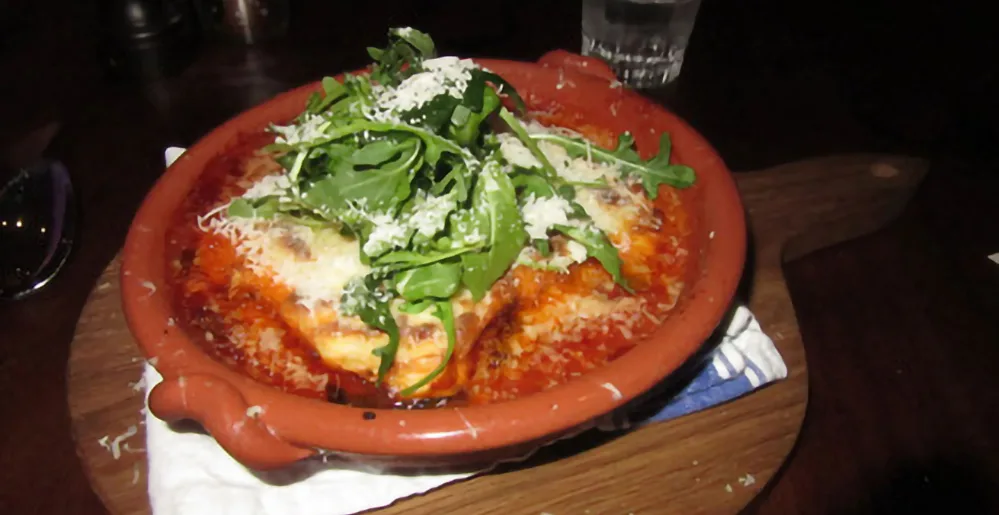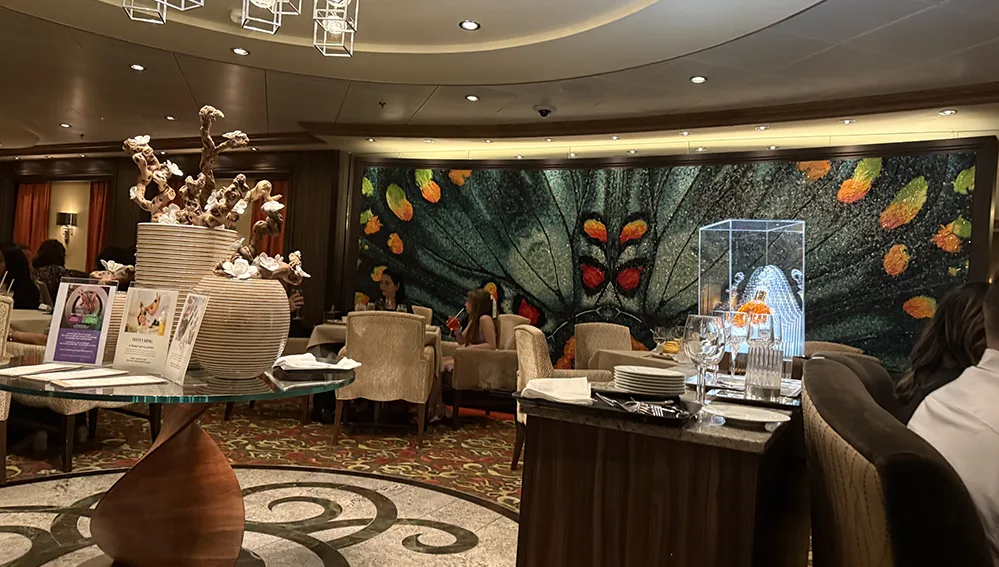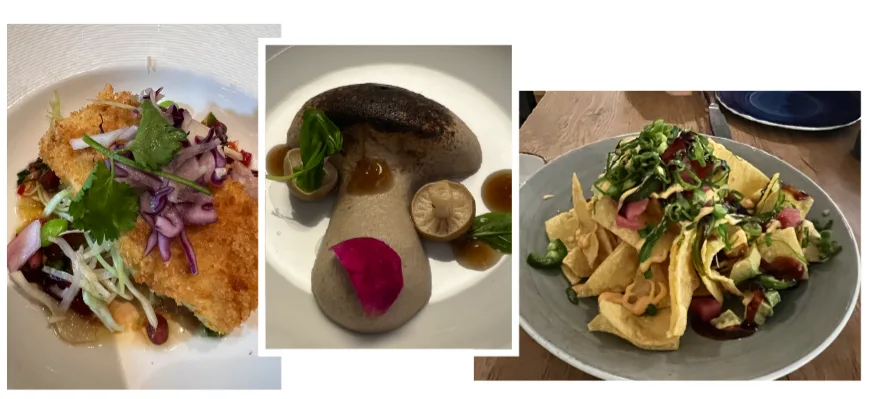
When people go on cruises, they expect superior food. For foodies, that expectation is even higher. However, many might expect the culinary quality to decline as cruise ships grow in size and passenger capacity. That’s not always the case. According to the travel website The Points Guy, Carnival is rated as having the best food among cruisers. That may surprise those familiar with cruise lines, but high-quality meals are available at eateries from chefs like Guy Fieri and Emeril Lagasse.
Of course, not every cruise line meets that standard — whether in the main dining rooms, buffets, or complimentary food stands. That’s why specialty dining has become increasingly popular among cruisers. Specialty dining offers passengers more upscale, unique options ranging from high-end steakhouses and French bistros to Italian trattorias, themes, and chef’s table experiences.
Even with per-person surcharges ranging from $25 to $150, cruise lines are expanding their specialty dining offerings for guests willing to pay. Many even offer discounted packages to encourage guests to try them. For example, MSC and Royal Caribbean bundle multiple meals, while Norwegian, Holland America, and Princess include them in amenities packages.
So, is specialty dining on a cruise ship worth the extra cost? I spoke with experienced cruisers who value gourmet food and asked them whether it’s worth the upgrade—especially when most food is already included in the cruise fare.
5 key questions to consider before booking a specialty dining experience on your cruise
1. Is paying extra for specialty dining worth it?
Some cruise travelers are more than satisfied with the included dining options, especially on ships known for above-average cuisine. However, buffets and main dining rooms often prioritize quantity over quality, disappointing some diners.
So, ask yourself: “Should I pay extra for a meal that will probably be better than what’s offered in the main dining room or buffet?”
In my experience, specialty dining consistently delivers superior food with more personalized service, elevated menu items, and a cozier atmosphere. One of my friends considers it an essential part of his cruise experience — something he never skips.

2. Do you prefer a curated, high-quality menu?
Specialty dining restaurants often have more refined, focused menus than the buffets and main dining rooms. If they offer variety — like Royal Caribbean’s 150 Central Park — the selections are typically built around specific themes, such as locally sourced ingredients, seasonal dishes, or chef’s tables.
Some standout specialty restaurants my colleagues and I have tried include:
- Tamarind (Holland America Line) – A pan-Asian eatery where every dish bursts with complex spices, aromas, and flavors.
- Alfredo’s & Gigi’s Pizzeria (Princess Cruises) – A Neapolitan-style pizzeria that transforms simple ingredients into extraordinary flavors.
- Cagney’s Steakhouse (Norwegian Cruise Line) – A classic steakhouse and seafood restaurant known for delectable entrées and gourmet sides.

If you prefer high-quality, carefully crafted dishes, specialty dining might be worth the investment.
3. Does exceptional service matter to you?
One common complaint about cruise ship dining is inconsistent service — especially in buffets and high-volume main dining rooms. While some cruise lines offer excellent service in the main dining rooms, many cruisers report inconsistent attention due to the sheer volume of guests.
At specialty dining venues, however, the experience is often more personal. For example, my husband and I dined at Jamie’s Italian on a recent Royal Caribbean cruise. The waiter asked if I had tried the restaurant before and suggested the lasagna, describing its fresh pasta layers, rich Bolognese, and creamy cheeses. His recommendation made the meal feel tailored and memorable—a level of service rarely found in larger dining rooms.
If you value personalized attention and superior service, specialty dining is a great choice.

4. Looking for a quieter, more intimate dining setting?
Cruise buffets can feel chaotic, with passengers rushing from station to station. Even main dining rooms on Royal Caribbean and Carnival often resemble holiday airport terminals, especially for those with flexible dining times. Choosing specialty dining avoids that situation. These dining areas are smaller, quieter, more intimate, and exclusive. In this cozy setting, you’ll feel like you’ve received a personal invitation, with servers giving extra attention to enhance your experience.

5. Do you enjoy trying unique and adventurous dishes?
For foodies, specialty dining often provides a more creative and innovative menu. Wonderland on Royal Caribbean and The Test Kitchen aboard Virgin Voyages take culinary innovation to surprising levels.
Even more traditional venues serving Mexican, Asian, or Italian cuisine tend to push boundaries beyond what’s typically offered in the main dining room. And nearly every cruise line features a chef’s table experience—a multicourse tasting menu with wine pairings led by the ship’s executive chef.
For foodies, specialty dining often provides a more creative and innovative menu. Here are just a few standout experiences that showcase how cruise lines go beyond the ordinary:
- Wonderland (Royal Caribbean) and The Test Kitchen (Virgin Voyages) take culinary innovation to surprising levels.
- Even traditional venues serving Mexican, Asian, or Italian cuisine tend to push boundaries beyond what’s available in the main dining room.
- Nearly every cruise line offers a chef’s table experience—a multicourse tasting menu paired with wines led by the ship’s executive chef.
For those who love unique and exciting flavors, specialty dining can be a highlight of the cruise.

Final thoughts: is paying for premium dining worth it?
Experiencing at least one upgraded dining venue can enhance your cruise vacation — especially if you’re comfortable paying more for a meal and consider elevated cuisine essential to your travel experience.





